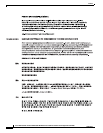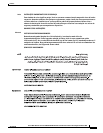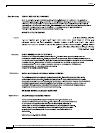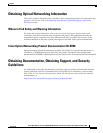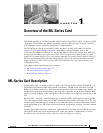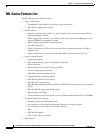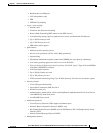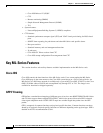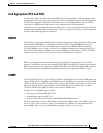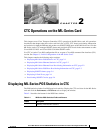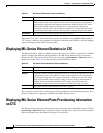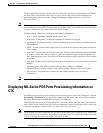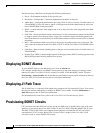
1-4
Cisco ONS 15310-CL and Cisco ONS 15310-MA Ethernet Card Software Feature and Configuration Guide R8.5
78-18133-01
Chapter 1 Overview of the ML-Series Card
Key ML-Series Features
–
Cisco IOS Release 12.2(28)SV
–
CTC
–
Remote monitoring (RMON)
–
Simple Network Management Protocol (SNMP)
–
TL1
• System features:
–
Network Equipment Building Systems 3 (NEBS3) compliant
• CTC features:
–
Standard synchronous transport signal (STS) and VCAT circuit provisioning for POS virtual
ports
–
SONET alarm reporting for path alarms and other ML-Series card specific alarms
–
Raw port statistics
–
Standard inventory and card management functions
–
J1 path trace
–
Cisco IOS CLI Telnet sessions from CTC
–
Cisco IOS startup configuration file management from CTC
Key ML-Series Features
This section describes selected key features and their implementation on the ML-Series cards.
Cisco IOS
Cisco IOS controls the data functions of the ML-Series cards. Users cannot update the ML-Series
Cisco IOS image in the same manner as the Cisco IOS system image on a Cisco Catalyst Series. An
ML-Series Cisco IOS image upgrade is available only as part of the Cisco ONS 15310-CL or the Cisco
ONS 15310-MA software release and accomplished only through CTC or TL1. The image is not
available for download or shipped separately.
GFP-F Framing
GFP defines a standard-based mapping of different types of services onto SONET/SDH. The ML-Series
and CE-Series support frame-mapped GFP (GFP-F), which is the protocol data unit (PDU)-oriented
client signal adaptation mode for GFP. GFP-F maps one variable length data packet onto one GFP
packet.
GFP is composed of common functions and payload specific functions. Common functions are those
shared by all payloads. Payload-specific functions are different depending on the payload type. GFP is
detailed in the ITU recommendation G.7041.



